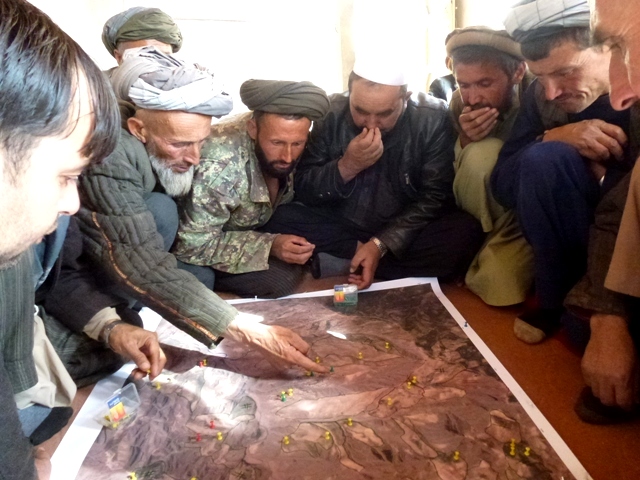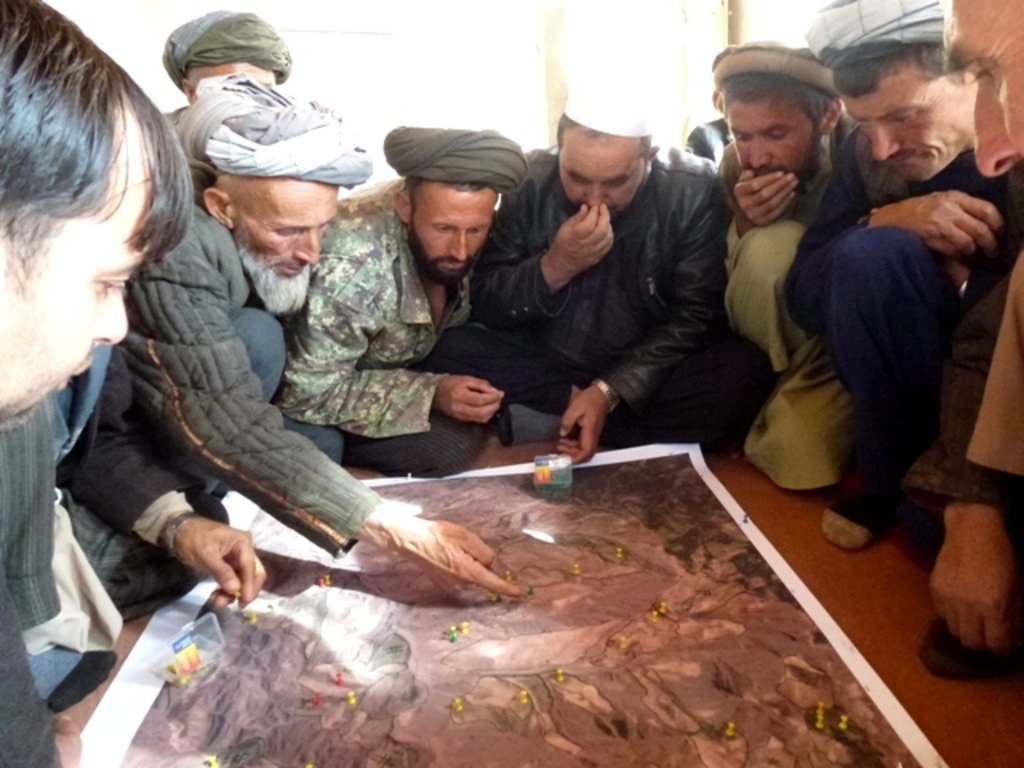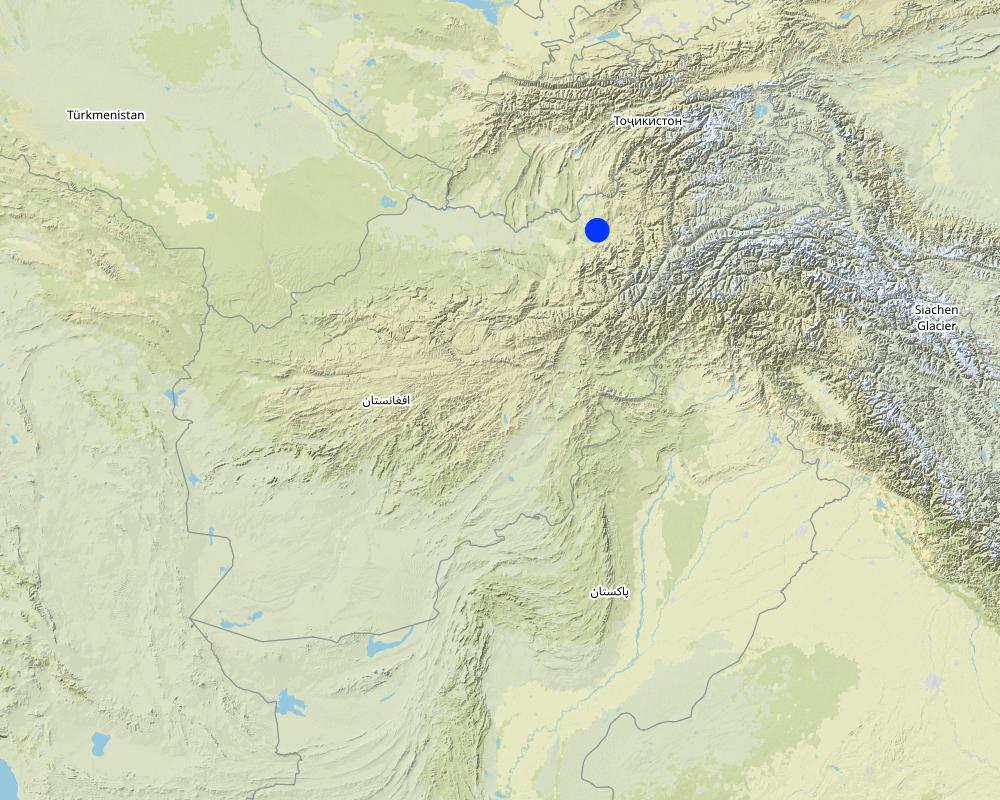Watershed Associations (WSA) and Natural Resource Management Committees (NRMC) [ອັຟການີດສະຖານ]
- ການສ້າງ:
- ປັບປູງ:
- ຜູ້ສັງລວມຂໍ້ມູນ: Bettina Wolfgramm
- ບັນນາທິການ: Roziya Kirgizbekova, Aqila Haidery
- ຜູ້ທົບທວນຄືນ: William Critchley
approaches_545 - ອັຟການີດສະຖານ
ເບິ່ງພາກສ່ວນ
ຂະຫຍາຍທັງໝົດ ຍຸບທັງໝົດ1. ຂໍ້ມູນທົ່ວໄປ
1.2 ລາຍລະອຽດ ການຕິດຕໍ່ ຂອງບຸກຄົນທີ່ຊັບພະຍາກອນ ແລະ ສະຖາບັນ ການມີສ່ວນຮ່ວມ ໃນການປະເມີນຜົນ ແລະ ເອກະສານ ຂອງວິທີທາງ
ຊື່ຂອງໂຄງການ ທີ່ອໍານວຍຄວາມສະດວກ ໃນການສ້າງເອກກະສານ ຫຼື ປະເມີນດ້ານແນວທາງ (ຖ້າກ່ຽວຂ້ອງ)
Potential and limitations for improved natural resource management (NRM) in mountain communities in the Rustaq district, Afghanistan (Rustaq NRM Study)ຊື່ຂອງ ສະຖາບັນການຈັດຕັ້ງ ທີ່ອໍານວຍຄວາມສະດວກ ໃນການສ້າງເອກກະສານ ຫຼື ປະເມີນແນວທາງ (ຖ້າກ່ຽວຂ້ອງ)
Terre des Hommes (Terre des Hommes) - ສະວິດເຊີແລນຊື່ຂອງ ສະຖາບັນການຈັດຕັ້ງ ທີ່ອໍານວຍຄວາມສະດວກ ໃນການສ້າງເອກກະສານ ຫຼື ປະເມີນແນວທາງ (ຖ້າກ່ຽວຂ້ອງ)
CDE Centre for Development and Environment (CDE Centre for Development and Environment) - ສະວິດເຊີແລນ1.3 ເງື່ອນໄຂ ຂອງການນໍາໃຊ້ເອກກະສານຂໍ້ມູນ ຂອງ WOCAT
ເມື່ອໃດທີ່ໄດ້ສັງລວມຂໍ້ມູນ (ຢູ່ພາກສະໜາມ)?
17/10/2016
ຜູ້ສັງລວມ ແລະ ບັນດາຜູ້ຕອບແບບສອບຖາມ ຍອມຮັບໃນເງື່ອນໄຂ ການນໍາໃຊ້ຂໍ້ມູນເອກະສານ ທີ່ສ້າງຂື້ນ ໂດຍຜ່ານ ອົງການ WOCAT:
ແມ່ນ
1.4 ເອກະສານອ້າງອີງ (ຫຼາຍ) ກັບແບບສອບຖາມ (ຫຼາຍ) ເຕັກໂນໂລຢີ ຂອງດ້ານການຄຸ້ມຄອງ ດິນແບບຍືນຍົງ
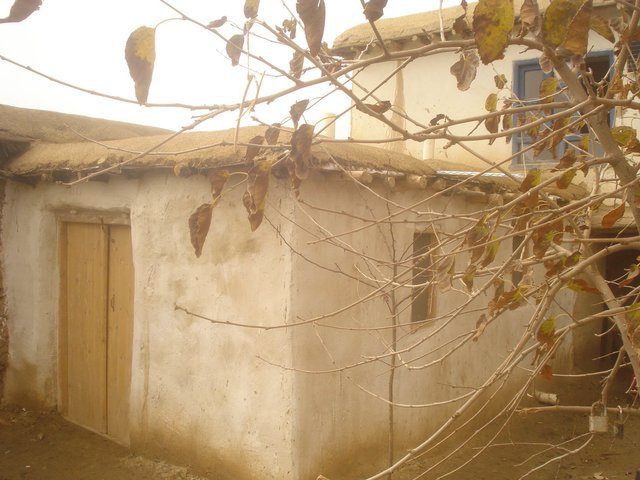
Improved livestock shed for better health and productivity [ອັຟການີດສະຖານ]
Existing livestock sheds can be improved through interior and exterior refurbishing, and door and window installation. More favourable indoor conditions benefit animal health and the quality of animal products.
- ຜູ້ສັງລວມຂໍ້ມູນ: Bettina Wolfgramm
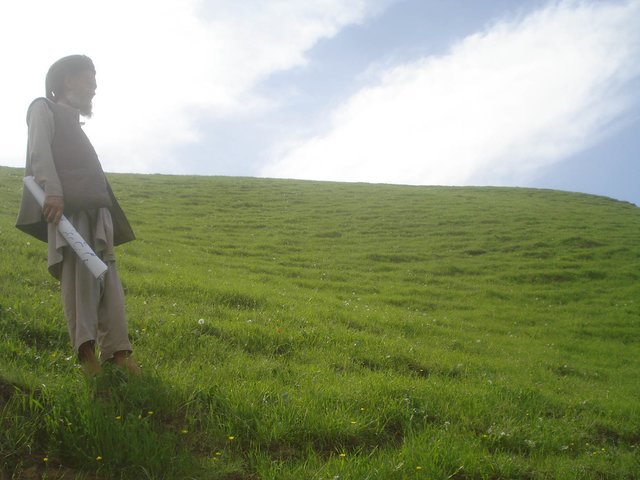
Rotational grazing to restore degraded pastures [ອັຟການີດສະຖານ]
A plan for rotational grazing has been developed to control pasture use and prevent overgrazing of rehabilitated pastures.
- ຜູ້ສັງລວມຂໍ້ມູນ: Bettina Wolfgramm
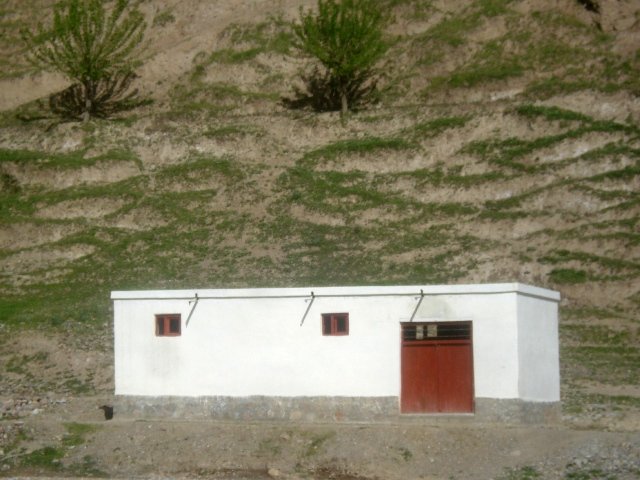
Community fodder bank for sustaining supplies [ອັຟການີດສະຖານ]
Community fodder banks have been established in villages for the purpose of ensuring supplies of livestock fodder during winter, to prevent loss of livestock and to prevent over-grazing early in spring.
- ຜູ້ສັງລວມຂໍ້ມູນ: Bettina Wolfgramm
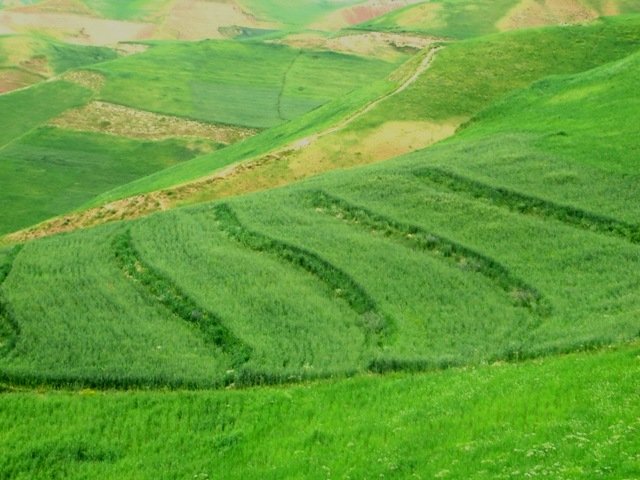
Terraces with improved seed and fertilizer application [ອັຟການີດສະຖານ]
Terraces are established on mountain slopes used mainly for cropping wheat, with the purpose of soil protection from erosion, preserving runoff, sediments and nutrients on-site. Improved seeds and fertilizer are applied on the terraces for increasing crop yield, but also vegetation cover and biomass production, and thus prevent further land …
- ຜູ້ສັງລວມຂໍ້ມູນ: Roziya Kirgizbekova
2. ພັນລະນາ ແນວທາງການຄຸ້ມຄອງນໍາໃຊ້ດິນແບບຍືນຍົງ
2.1 ການອະທິບາຍ ໂດຍຫຍໍ້ ຂອງວິທີທາງ
Two Watershed Associations (WSA), in Chaker and Nahristan watershed areas respectively, are registered at the national level with the Ministry of Agriculture Irrigation and Livestock (MAIL) and at the regional level with the Department of Agriculture. Both associations are strong, active, dynamic, and have the capacity to coordinate and support the Natural Resource Management Committees (NRMC) at village level.
2.2 ການອະທິບາຍ ລາຍລະອຽດ ຂອງວິທີທາງ
ການອະທິບາຍ ລາຍລະອຽດ ຂອງວິທີທາງ:
Terre des Hommes (Tdh) has been implementing the Livelihood project (LIPT) in Rustaq district in northern Afghanistan since 2007. The overall aim of the project is to offer the rural population new and improved livelihood options, with capacity building of the rural population, to design and implement their own sustainable development options, and to enhance their resilience to cope with natural and conflict-related stress. For this purpose, capacity of supporting stakeholder institutions is strengthened (LIPT’s boundary partners) to ensure that good development is on-going. Boundary partners are trained and equipped in relevant techniques regarding sustainable natural resource management.
Two Watershed Associations (WSA) and 20 Natural Resources Management Committees (NRMC) were founded through LIPT. Two WSAs, in Chaker and Nahristan watershed areas, are registered at national level within the Ministry of Agriculture Irrigation and Livestock (MAIL), and at the regional level with the Department of Agriculture. Both associations are strong, active, dynamic, and have the capacity to coordinate and support the NRMCs at village level. Out of their newly established and registered regional offices, the WSAs coordinate the NRMCs, take over responsibilities from Tdh (e.g. the 2014 reforestation campaign) and are getting more involved in planning and monitoring of LIPT’s activities. The 20 NRMCs have "hands and eyes" on all LIPT activities implemented in their communities, and their trained extension workers render valuable services to the farmers in their villages.
Methods: Today, all NRMCs have a strong institutional set-up. Their extension workers have been trained and equipped. Members of NRMCs and WSAs have been trained on group management, planning, documentations, record keeping, IPM, reforestation management, soil protection, mulching, hedgerows and terracing, making fermenters, pruning and budding. WSAs and NRMCs gained further organizational, technical and management capacity building in both watershed areas. As one of biggest challenge at watershed level is soil erosion within hillside agriculture, LIPT III trained the NRMCs and WSAs on terracing and hedgerows to protect the soil from erosion. Furthermore, NRMCs were trained in sustainable irrigation water management, gully treatment, and surface water harvesting. There were also training courses conducted on leadership, finance, proposal writing, documentation, procurement and operations management.
Both WSAs and NRMCs started to get a real understanding of environmental issues and were then able to motivate their communities. WSAs coordinated the NRM intervention with NRMCs including reforestation, soil protection hedgerows, contour lines, terracing, establishment of public nurseries (to produce trees and be an income source for WSAs), establishment of centralized community bakeries (to reduce the demand for firewood and decrease the women’s workload in the watershed areas), irrigation infrastructure, bio-engineering and gully control (to reduce the progression of gullies on both ploughed lands and pastures), livestock value chains at regional (watershed) level, etc., while NRMCs are looking after these interventions and the mobilization of the community at the village level. Farmers and communities have adopted natural resource management practices to maintain/increase soil fertility, rangeland, water resources and forest coverage.
2.3 ຮູບພາບຂອງແນວທາງ
2.5 ປະເທດ / ເຂດ / ສະຖານທີ່ບ່ອນທີ່ແນວທາງໄດ້ຖືກນໍາໃຊ້
ປະເທດ:
ອັຟການີດສະຖານ
ພາກພື້ນ / ລັດ / ແຂວງ:
Tahor Province, Rustaq districts
ຂໍ້ມູນເພີ່ມເຕີມຂອງສະຖານທີ່:
Dashti Mirzai, Javaz Khana and Sari Joy villages
Map
×2.6 ວັນທີເລີ່ມຕົ້ນ ແລະ ສິ້ນສຸດ ການຈັດຕັ້ງປະຕີບັດ ວິທີທາງ
ສະແດງປີຂອງການເລີ່ມຕົ້ນ:
2007
ຖ້າຫາກບໍ່ຮູ້ຈັກປີທີ່ແນ່ນອນ, ໃຫ້ປະມານຄາດຄະເນ ເອົາມື້ທີ່ໄດ້ເລີ່ມຈັດຕັ້ງປະຕິບັດ ວິທີທາງ:
ຕໍ່າກວ່າ 10 ປີ ຜ່ານມາ (ມາເຖິງປະຈຸບັນ)
2.7 ປະເພດຂອງແນວທາງ
- ພາຍໃຕ້ໂຄງການ / ແຜນງານ
2.8 ເປົ້າໝາຍ / ຈຸດປະສົງຫຼັກ ຂອງການຈັດຕັ້ງປະຕິບັດ ວິທີທາງ
The main aim of the project is to offer the rural population new and improved livelihood options and to deliver capacity building for the rural population to design and implement their own sustainable development options and enhance their resilience to cope with natural and conflict related stress.
2.9 ເງື່ອນໄຂອໍານວຍ ຫຼື ຂັດຂວາງການປະຕິບັດຂອງເຕັກໂນໂລຢີ / ເຕັກໂນໂລຢີການນໍາໃຊ້ຕາມແນວທາງ
ສັງຄົມ / ວັດທະນະທໍາ / ມາດຕະຖານ ແລະ ຄຸນຄ່າທາງສາສະໜາ
- ອໍານວຍ
The functions of men and women are clearly distinguished within Afghan society, while at the same time within the family this division of work and functions also results in men and women working hand-in-hand. An improvement of the family’s livelihood situation is expected to positively affect all family members. However. it is recognized that the involvement of women is key in order to secure basic human rights for everyone, to achieve good governance, sustainable development, and to efficiently contribute to poverty reduction (SDC 2004), it is also clear that a context sensitive approach is of high importance.
- ເຊື່ອງຊ້ອນ
Lack of capacity of the rural population to design and implement sustainable development options; vulnerability to natural and conflict related stress
ການກໍ່ຕັ້ງສະຖາບັນ
- ອໍານວຍ
Establishment of Watershed Associations (WSA) and Natural Resources Management Committees (NRMC)
- ເຊື່ອງຊ້ອນ
Lack of institutions at the community level to introduce natural resource management options
ຄວາມຮູ້ກ່ຽວກັບການຄຸ້ມຄອງ ທີ່ດິນແບບຍືນຍົງ, ການເຂົ້າເຖິງການສະໜັບສະໜູນ ທາງດ້ານວິຊາການ
- ອໍານວຍ
Training has improved technical knowledge
- ເຊື່ອງຊ້ອນ
Lack of technical knowledge
3. ການມີສ່ວນຮ່ວມ ແລະ ບົດບາດຂອງພາກສ່ວນທີ່ກ່ຽວຂ້ອງທີ່ໄດ້ມີສ່ວນຮ່ວມ
3.1 ຜູ້ມີສ່ວນຮ່ວມ ໃນວິທີທາງ ແລະ ພາລະບົດບາດ ຂອງເຂົາເຈົ້າ
- ຜູ້ນໍາໃຊ້ດິນໃນທ້ອງຖິ່ນ / ຊຸມຊົນທ້ອງຖິ່ນ
The overall aim of the project is to offer the rural population new and improved livelihood options and give capacity building to the rural population to design and implement their own sustainable development options, and enhance their resilience to cope with natural and conflict related stress.
- ອົງການຈັດຕັ້ງ ພາຍໃນຊຸມຊົນ
Watershed Associations (WSA) and Natural Resources Management Committees (NRMC)
- ອົງການຈັດຕັ້ງ ສາກົນ
Terre des Hommes , SDC
3.2 ການມີສ່ວນຮ່ວມຂອງຜູ້ນໍາໃຊ້ທີ່ດິນໃນທ້ອງຖິ່ນ / ຊຸມຊົນທ້ອງຖິ່ນໃນໄລຍະທີ່ແຕກຕ່າງກັນຂອງແນວທາງ
| ການລວບລວມ ເອົາຜູ້ນໍາໃຊ້ດິນ ໃນທ້ອງຖິ່ນ / ຊຸມຊົນທ້ອງຖິ່ນ | ໃຫ້ລະບຸ ຜູ້ໃດທີ່ມີສ່ວນຮ່ວມ ໃນແຕ່ລະກິດຈະກໍາ? | |
|---|---|---|
| ການເລີ່ມຕົ້ນ / ແຮງຈູງໃຈ | ບໍ່ມີ | |
| ການວາງແຜນ | ການຮ່ວມມື | |
| ການປະຕິບັດ | ການຮ່ວມມື | |
| ຕິດຕາມກວດກາ / ການປະເມີນຜົນ | ການຮ່ວມມື |
3.4 ການຕັດສິນໃຈກ່ຽວກັບການຄັດເລືອກເຕັກໂນໂລຢີຂອງການຄຸ້ມຄອງທີ່ດິນແບບຍືນຍົງ / ເຕັກໂນໂລຢີ
ລະບຸ ຄົນທີ່ຕັດສິນໃຈ ກ່ຽວກັບການຄັດເລືອກຂອງ ເຕັກໂນໂລຢີ / ເຕັກໂນໂລຢີ ຈະໄດ້ຮັບການປະຕິບັດ:
- ພາກສ່ວນກ່ຽວຂ້ອງທັງໝົດ, ເປັນສ່ວນໜຶ່ງ ຂອງວິທີທາງແບບມີສ່ວນຮ່ວມ
4. ການສະໜັບສະໜູນທາງດ້ານວິຊາການ, ການສ້າງຄວາມສາມາດ, ແລະ ການຈັດການຄວາມຮູ້.
4.1 ການສ້າງຄວາມສາມາດ / ການຝຶກອົບຮົມ
ຜູ້ນໍາໃຊ້ທີ່ດິນ ຫຼື ພາກສ່ວນກ່ຽວຂ້ອງອື່ນໆ ໄດ້ຮັບການຝຶກອົບຮົມບໍ່?
ແມ່ນ
ໃຫ້ລະບຸ ຜູ້ໃດທີ່ໄດ້ຮັບການຝຶກອົບຮົມ:
- ຜູ້ນໍາໃຊ້ດິນ
- ພະນັກງານພາກສະໜາມ / ທີ່ປຶກສາ
4.2 ການບໍລິການໃຫ້ຄໍາປຶກສາ
ເຮັດຜູ້ໃຊ້ທີ່ດິນມີການເຂົ້າເຖິງການບໍລິການໃຫ້ຄໍາປຶກສາ?
ແມ່ນ
ລະບຸວ່າການສະໜອງ ການບໍລິການ ໃຫ້ຄໍາປຶກສາ:
- ໃນພື້ນທີ່ຂອງຜູ້ນໍາໃຊ້ດິນ
4.3 ສະຖາບັນການສ້າງຄວາມເຂັ້ມແຂງ (ການພັດທະນາອົງການຈັດຕັ້ງ)
ສະຖາບັນ ໄດ້ຮັບການສ້າງຕັ້ງຂື້ນ ຫຼື ໄດ້ຮັບການສ້າງຄວາມເຂັ້ມແຂງ ໂດຍການຈັດຕັ້ງປະຕິບັດ ວິທີທາງບໍ່?
- ມີ, ພໍສົມຄວນ
ລະບຸ ທາງສະຖາບັນ ໄດ້ສ້າງຄວາມເຂັ້ມແຂງ ໃນລະດັບໃດ (ຫຼາຍ):
- ທ້ອງຖິ່ນ
- ລະດັບພາກພື້ນ
- ແຫ່ງຊາດ
ອະທິບາຍ ສະຖາບັນການຈັດຕັ້ງ, ພາລະບົດບາດ ແລະ ໜ້າທີ່ຮັບຜິດຊອບ, ສະມາຊິກ ແລະ ອື່ນໆ.
LIPT III will leave behind successful and strong boundary partners in place to carry out the development options, as main boundary partners (WSAs, NRMCs, as the major boundary partners) will have a source of income for their operation and management.
ລະບຸ ປະເພດ ຂອງສະໜັບສະໜູນ:
- ທາງດ້ານການເງິນ
- ການສ້າງຄວາມອາດສາມາດ / ການຝຶກອົບຮົມ
- ອຸປະກອນ
4.4 ຕິດຕາມກວດກາ ແລະ ປະເມີນຜົນ
ການຈັດຕັ້ງປະຕິບັດ ວິທີທາງ ໄດ້ມີການປະເມີນຜົນ ແລະ ຕິດຕາມບໍ?
ແມ່ນ
4.5 ການຄົ້ນຄວ້າ
ນີ້້ແມ່ນສ່ວນໜຶ່ງ ການຄົ້ນຄວ້າ ຂອງວິທີທາງບໍ່?
ແມ່ນ
ລະບຸ ຫົວຂໍ້:
- ເສດຖະສາດ / ການຕະຫຼາດ
- ເຕັກໂນໂລຢີ
ໃຫ້ຂໍ້ມູນ ເພີ່ມເຕີມ ແລະ ກໍານົດ ຜູ້ໃດເຮັດການຄົ້ນຄວ້າ:
On-going research, as well as multiple trials by LIPT to find the best-adapted technical solutions, to communicate and discuss them with local communities and farmers, were the key elements of this success.
5. ການສະໜັບສະໜູນທາງດ້ານການເງິນ ແລະ ອຸປະກອນຈາກພາຍນອກ
5.1 ງົບປະມານປະຈໍາປີ ສໍາລັບວິທີທາງ ຂອງການຄຸ້ມຄອງ ທີ່ດິນແບບຍືນຍົງ
ຖ້າຫາກບໍ່ຮູ້ຈັດງົບປະມານທີ່ແນ່ນອນ ແມ່ນໃຫ້ປະມານເອົາ:
- 10,000-100,000
5.2 ການສະໜັບສະໜູນ ທາງດ້ານການເງິນ / ອຸປະກອນ ສະໜອງໃຫ້ແກ່ຜູ້ນໍາທີ່ດິນ
ຜູ້ນໍາໃຊ້ດິນ ໄດ້ຮັບການສະໜັບສະໜູນ ທາງດ້ານ ການເງິນ / ອຸປະກອນ ໃນການຈັດຕັ້ງປະຕິບັດ ເຕັກໂນໂລຢີບໍ?
ແມ່ນ
ຖ້າແມ່ນ, ໃຫ້ລະບຸປະເພດ (ຫຼາຍ) ຂອງການສະໜັບສະໜູນ, ເງື່ອນໄຂ ແລະ ຜູູ້ສະໜອງ (ຫຼາຍ):
Fully supported under project
5.4 ສິນເຊື່ອ
ໄດ້ປ່ອຍສິນເຊື່ອ ສະໜອງໃຫ້ພາຍໃຕ້ ວິທີການສໍາລັບກິດຈະກໍາ ການຄຸ້ມຄອງ ທີ່ດິນແບບຍືນນຍົງບໍ່?
ບໍ່ແມ່ນ
5.5 ສິ່ງຈູງໃຈ ຫຼື ເຄື່ອງມືອື່ນໆ
ການສົ່ງເສີມ ຈັດຕັ້ງປະຕິບັດ ເຕັກໂນໂລຢີ ໃນການຄຸ້ມຄອງ ດິນແບບຍືນຍົງ ໄດ້ສະໜອງສິ່ງກະຕຸກຊຸກຍູ້ບໍ່?
ແມ່ນ
ຖ້າແມ່ນ, ໃຫ້ລະບຸ:
local institution were support with equipment
6. ວິເຄາະຜົນກະທົບ ແລະ ສັງລວມບັນຫາ
6.1 ຜົນກະທົບຂອງແນວທາງ
ການຈັດຕັ້ງປະຕິບັດ ວິທີທາງ ສາມາດຊ່ວຍຜູ້ນໍາໃຊ້ທີ່ດິນ ໃນການຈັດຕັ້ງປະຕິບັດ ແລະ ບໍາລຸງຮັກສາ ເຕັກໂນໂລຢີ ການຄຸ້ມຄອງ ທີ່ດິນແບບຍືນຍົງໄດ້ບໍ?
- ບໍ່
- ມີ, ໜ້ອຍໜຶ່ງ
- ມີ, ພໍສົມຄວນ
- ມີ, ຫຼາຍ
NRM is the area where LIPT III made the most remarkable progress despite the fact that NRM was a completely new approach, and its implementation is highly demanding in terms of manpower, community awareness and mobilization. Profound changes in behaviour, motivation and mobilization both at individual and community levels made this possible. On-going research, as well as multiple trials by LIPT to find the best-adapted technical solutions, and to communicate and discuss them with local communities and farmers, were the key elements of this success. The NRMCs, WSAs as well as individual farmers in both watershed areas increased their knowledge and gained a better understanding of the importance of sustainable management, rehabilitation of farm land, pastures and their main natural resources. Farmers adapt and replicate the innovations once they see the results, farmers interest became high and they are ready to replicate it to protect their land form degradation.
ການນໍາໃຊ້ ວິທີທາງ ສາມາດປັບປຸງຄວາມຮູ້ ແລະ ຄວາມສາມາດຂອງຜູ້ນໍາໃຊ້ທີ່ດິນ ໃນການປະຕິບັດ ການຄຸ້ມຄອງ ທີ່ດິນແບບຍືດຍົງໄດ້ບໍ່?
- ບໍ່
- ມີ, ໜ້ອຍໜຶ່ງ
- ມີ, ພໍສົມຄວນ
- ມີ, ຫຼາຍ
Farmers adapt and replicate the innovations. Once they see the results, farmers' interest became high and they are ready to replicate it to protect their land from degradation.
ການນໍາໃຊ້ ວິທີທາງ ໄດ້ປັບປຸງ ການຈ້າງງານ, ໂອກາດ ໃນການສ້າງລາຍຮັບບໍ່?
- ບໍ່
- ມີ, ໜ້ອຍໜຶ່ງ
- ມີ, ພໍສົມຄວນ
- ມີ, ຫຼາຍ
One Example: Under irrigation water improvement interventions, LIPT in coordination with NRMCs brought more 110 ha land under irrigation and the yield is expected to be doubled in this agricultural land, and NRMCs are trained on sustainable irrigation water management, gully treatment, and surface water harvesting
6.2 ແຮງຈູງໃຈຫຼັກຂອງຜູ້ນໍາໃຊ້ທີ່ດິນໃນການປະຕິບັດການຄຸ້ມຄອງທີ່ດິນແບບຍືນຍົງ
- ການຜະລິດເພີ່ມຂຶ້ນ
- ຫຼຸດຜ່ອນດິນເຊື່ອມໂຊມ
- ຫຼຸດຜ່ອນຄວາມສ່ຽງຂອງໄພພິບັດ
6.3 ຄວາມຍືນຍົງຂອງກິດຈະກໍາວິທີທາງ
ຜູ້ນໍາໃຊ້ ທີ່ດິນ ສາມາດສືບຕໍ່ ການຈັດຕັ້ງປະຕິບັດ ຜ່ານວິທີທາງໄດ້ບໍ່ (ໂດຍປາດສະຈາກ ການຊ່ວຍເຫຼືອ ຈາກພາກສ່ວນພາຍນອກ)?
- ແມ່ນ
ຖ້າ ໄດ້, ອະທິບາຍເຫດຜົນ:
To look to the capacity and institutional strengthening of the project boundary partners, LIPT III will leave behind a successful and strong boundary partner in place to carry out the development options, as main boundary partners will have source of income (nurseries, cooperative shop, etc.) for their operation and management.
6.4 ຈຸດແຂງ / ຂໍ້ດີ ຂອງວິທີທາງ
| ຈຸດແຂງ / ຂໍ້ດີ / ໂອກາດໃນການນໍາໃຊ້ທີ່ດິນ |
|---|
| The traditional social structures and customary institutions play an important role in problem solving in everyday community life, but traditional problem solving structures may also limit the taking up of new approaches. More effective approaches are needed, for example in the field of the management of common pool resources (water, pastures, trees and shrubs). The newly established Watershed Associations demonstrate how groups addressing specific urgent tasks may be successfully established and functioning within a very short period of time. |
|
NRM is the area where LIPT III made the most remarkable progress despite the fact that NRM was a completely new approach, and its implementation is highly demanding in terms of manpower, community awareness and mobilization. Profound changes in behaviour, motivation and mobilization both at individual and community levels made this possible. The permanent research, as well as multiple trials by LIPT to find the best-adapted technical solutions, to communicate and discuss them with local communities and farmers were the key elements of this success. WSAs and NRMCs are playing an active role in implementation of NRM intervention, even they have become more interested and active when they registered in Department of Agriculture Irrigation and Livestock at national and regional level. |
| Farmers adapt and replicate the innovations once they see the results, as soil erosion is the main concern in Rustaq - but nobody in watershed area was ready to protect their agriculture land by implementing barrier hedgerows. After demonstrating of hedgerow by LIPT III, farmers saw its impact on controlling of soil erosion, farmers' interest became high and they are ready to replicate it to protect their land from degradation. |
|
All community extension workers are trained and in place, playing an essential role in supporting the boundary partners in implementing NRM activities that include community mobilization, technical design of orchards and nurseries, reforestation sites, terracing and hedgerow designs. The NRMCs, WSAs as well as individual farmers in both watershed areas increased their knowledge and gained better understanding of the importance of sustainable management, rehabilitation of farmland, pastures and their main natural resources. A high degree of motivation and mobilization of farmers, and adequate technical capacity of CEWs regarding NRM is certainly one of the main outcomes of the LIPT, and an essential step towards the fulfilment of LIPT’s mission. |
| ຈຸດແຂງ / ຈຸດດີ / ໂອກາດ ຈາກທັດສະນະຂອງຜູ້ປ້ອນຂໍ້ມູນ ຫຼື ບຸກຄົນສຳຄັນ |
|---|
| A rewarding sign of the development of NRM awareness is how farmers took up the problem of soil erosion.100 ha of cultivable land on hillsides have been terraced since the terracing activity had been initiated in November 2013. And 155 ha of additional land are in the process of being terraced. The biggest success with terracing is that a number of farmers started replication themselves what they had seen. |
7. ເອກກະສານອ້າງອີງ ແລະ ຂໍ້ມູນການເຊື່ອມໂຍງ
7.1 ວິທີການ / ແຫຼ່ງຂໍ້ມູນ
- ການໄປຢ້ຽມຢາມພາກສະໜາມ, ການສໍາຫຼວດພາກສະໜາມ
- ການລວບລວມ ບົດລາຍງານ ແລະ ເອກະສານອື່ນໆ ທີ່ມີຢູ່ແລ້ວ
ຂໍ້ມູນການເຊື່ອມຕໍ່ ແລະ ເນື້ອໃນ
ຂະຫຍາຍທັງໝົດ ຍຸບທັງໝົດການເຊື່ອມຕໍ່

Improved livestock shed for better health and productivity [ອັຟການີດສະຖານ]
Existing livestock sheds can be improved through interior and exterior refurbishing, and door and window installation. More favourable indoor conditions benefit animal health and the quality of animal products.
- ຜູ້ສັງລວມຂໍ້ມູນ: Bettina Wolfgramm

Rotational grazing to restore degraded pastures [ອັຟການີດສະຖານ]
A plan for rotational grazing has been developed to control pasture use and prevent overgrazing of rehabilitated pastures.
- ຜູ້ສັງລວມຂໍ້ມູນ: Bettina Wolfgramm

Community fodder bank for sustaining supplies [ອັຟການີດສະຖານ]
Community fodder banks have been established in villages for the purpose of ensuring supplies of livestock fodder during winter, to prevent loss of livestock and to prevent over-grazing early in spring.
- ຜູ້ສັງລວມຂໍ້ມູນ: Bettina Wolfgramm

Terraces with improved seed and fertilizer application [ອັຟການີດສະຖານ]
Terraces are established on mountain slopes used mainly for cropping wheat, with the purpose of soil protection from erosion, preserving runoff, sediments and nutrients on-site. Improved seeds and fertilizer are applied on the terraces for increasing crop yield, but also vegetation cover and biomass production, and thus prevent further land …
- ຜູ້ສັງລວມຂໍ້ມູນ: Roziya Kirgizbekova
ເນື້ອໃນ
ບໍ່ມີເນື້ອໃນ


